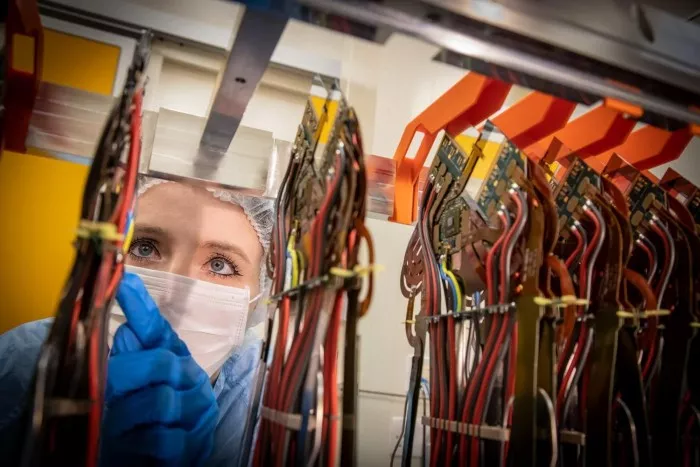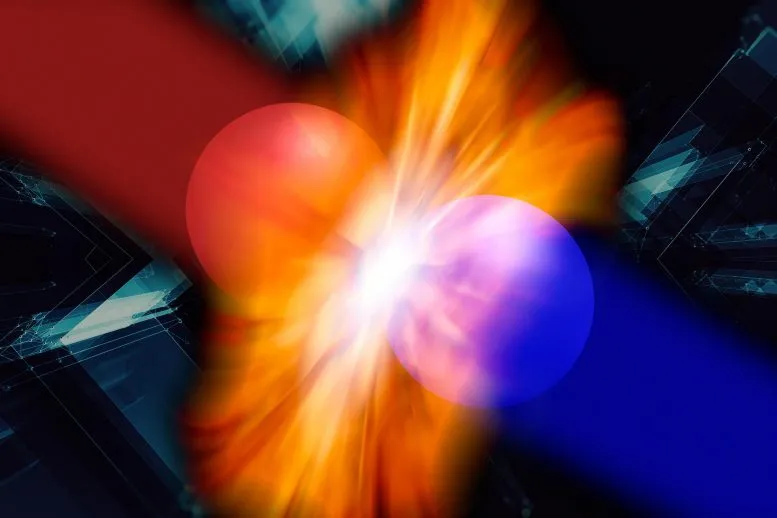The final part of the construction of a new detector has been completed, opening the first stop of the journey to reveal some of the most enduring mysteries in the universe. The 41 megapixel vertex locator (velo) was assembled at the University of Liverpool. It is assembled from components of different institutions and then transported to the Large Hadron Collider home (lhcb) experiment at the European Center for nuclear research.

Once installed in time for data collection, it will try to answer the following questions:
Why is the universe made up of matter rather than antimatter?
Why does it exist?
What else is out there?
The development of the new velo detector is led by the UK and funded by the Committee on scientific and technological facilities, and involves the following universities:
Bristol
Glasgow
Liverpool
Manchester
Oxford
Warwick University
The mystery of dark matter and antimatter
If the big bang produced the same amount of matter and antimatter, why didn't they annihilate each other and leave a universe full of light? How does matter survive?
In the moment after the big bang, the universe fell into a delicate balance between matter and antimatter.
According to our understanding of the laws of nature, these material forms should have annihilated each other and left a universe full of light. However, in all the difficulties, matter gained an advantage in some way, leaving something behind to form the universe as we know it today.
Our best understanding of the physics of the big bang tells us that matter and antimatter are produced in equal quantities. When they came into contact in the early universe (much smaller and much denser), all their combined mass should be violently converted into pure energy. Why and how matter survived this contact is one of the most profound mysteries in modern science.

The current theory is that although matter and antimatter are created as almost perfect mirrors, there must be some minor imbalances or flaws. This means that some are not perfect reflections. This difference, no matter how small, may be enough to give material an advantage. This is called charge parity violation (CP). This means that in some cases, the symmetry of matter and antimatter reflection will be broken.
This leads to a particle not being the perfect opposite of its twin, and this "broken symmetry" may mean that one particle may have an advantage over another.
When this symmetry is broken, an antimatter particle may decay at a speed different from its material counterpart. If enough of this violation occurred after the big bang, it may explain why matter survived.
By behaving differently from their antimatter equivalents, it is possible that matter particles that break symmetry take only a little time to decay. If this causes matter to stay longer, it can explain why it was the last one to exist.
Dark matter remains largely a mystery - velo detectors may help solve this problem.
Why matter survived is not the only mystery in the universe. There is another question that puzzles scientists: what might dark matter be?
Dark matter is an elusive, invisible type of matter that provides "gravitational glue" to move stars around galaxies. Because we don't know what dark matter is, there may be other new particles and forces in the universe that we haven't seen yet.
The discovery of anything new may reveal a completely different picture from the nature we have. New particles like this can declare themselves by cleverly changing the behavior of particles we can see, leaving tiny but detectable traces in our data.
The new velo detector will replace the old velo detector and will be used to study the subtle differences between matter and antimatter versions containing subatomic particles. These are called beauty quarks and charm quarks.
These strange particles containing quarks, also known as B and D mesons, are produced in the collision in the Large Hadron Collider (LHC). They are difficult to study because mesons are so unstable that they decay and disappear in a fraction of a second.
However, when they decay, they actually change into something else. Scientists believe that by studying these different decays and their characteristics, velo data will help lhcb reveal the basic forces and symmetries of nature.
Incredibly accurate measurement
The new velo detector will be as close as possible to where particles collide in the lhcb experiment. These particles decay in less than a millionth of a second and travel only a few millimeters. Therefore, this close contact will make it possible for the device to obtain the best opportunity to measure its characteristics.
Velo's sensitivity and beam close to LHC will enable it to measure particles with incredible accuracy as they decay.
By comparing these readings with the predictions of the standard model, the guiding theory of particle physics, scientists can look for deviations that may suggest new particles in nature. They can also look for reasons for CP violations or other material and antimatter behaviors.
These deviations may completely change our understanding of why the universe is like this.

Develop on the basis of the old
Velo may be new and cutting-edge, but it will build on the legacy of previous velo detectors. Velo has a state-of-the-art pixel detector consisting of small silicon squares that provide high resolution even in challenging radiation environments near the LHC beam.
Its predecessor was a stack of silicon detectors, which helped lhcb make some discoveries, including:
New material state
Beautiful quark decay and unexplained behavior in decay
Charm quarks and the difference between matter and antimatter
The new velo will be able to capture these decays in unprecedented detail. Coupled with the upgraded software and ultra fast readout electronic devices, the beautiful and charming quarks will be accurately located in real time. Scientists will have a device that will enable them to track and analyze decay that was previously difficult to reconstruct.
The new velo detector is unique in that scientists can lift the particle beam out when preparing it for collision. Then, when the lhcb is ready to collect data, they can mechanically move it to its original position.
This allows scientists to capture clear information from the first particles produced by the collision without unnecessary wear and tear on the beam.